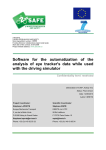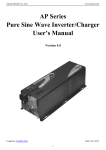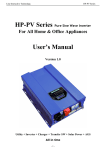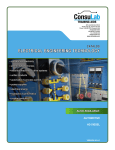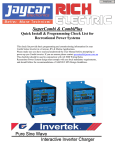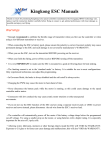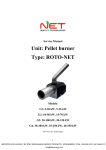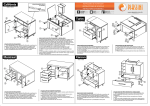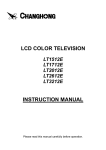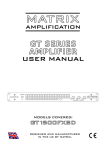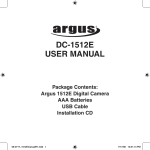Download AP Series Pure Sine Wave Inverter/Charger User`s Manual
Transcript
Yiyuan Electric Co., Ltd www.yiyen.com AP Series Pure Sine Wave Inverter/Charger User’s Manual Version 1.0 Date: Feb 12th, 2012 Composer: Franklin Chu 1 Yiyuan Electric Co., Ltd www.yiyen.com Table of Contents 1. Important Safety Information ........................................................................................................................ 3 1-1. General Safety Precautions ......................................................................................................................... 3 1-2. Precautions When Working with Batteries ................................................................................................ 3 2. Introduction .................................................................................................................................................... 4 2-1. General Information ................................................................................................................................... 4 2-2. Application.................................................................................................................................................. 4 2.3 Mechanical Drawing .................................................................................................................................... 5 2-4. Features ....................................................................................................................................................... 6 2.5 Electrical Performance ................................................................................................................................. 7 2.5.1 Invert .................................................................................................................................................. 7 2.5.2 AC Charger ........................................................................................................................................ 7 2.5.3 Solar Charger* ................................................................................................................................... 9 2.5.4 Power Saver ..................................................................................................................................... 10 2.5.5 Transfer ............................................................................................................................................ 11 2.5.6 Automatic Voltage Regulation* ...................................................................................................... 11 2.5.7 Protections........................................................................................................................................ 12 2.5.8 Remote control ................................................................................................................................. 13 2.5.9 LED Indicator & LCD ..................................................................................................................... 13 2.5.10 Audible Alarm ............................................................................................................................... 14 2.5.11 FAN Operation............................................................................................................................... 14 2.5.12 DIP Switches .................................................................................................................................. 15 2.5.13 Other features ................................................................................................................................. 15 3 Installation..................................................................................................................................................... 17 3.1 Location .............................................................................................................................................. 17 3.2 Wiring recommendation ..................................................................................................................... 17 3.3 Install Flange ....................................................................................................................................... 17 4 Troubleshooting Guide ................................................................................................................................. 19 5 Warranty ....................................................................................................................................................... 20 2 Yiyuan Electric Co., Ltd www.yiyen.com 1. Important Safety Information WARNING! Before using the Inverter, you need to read and save the safety instructions. 1-1. General Safety Precautions 1-1-1.Do not expose the Inverter to rain, snow, spray, bilge or dust. To reduce risk of hazard, do not cover or obstruct the ventilation openings. Do not install the Inverter in a zero-clearance compartment. Overheating may result. 1-1-2. To avoid a risk of fire and electronic shock. Make sure that existing wiring is in good electrical condition; and that wire size is not undersized. Do not operate the Inverter with damaged or substandard wiring. 1-1-3. This equipment contains components which can produce arcs or sparks. To prevent fire or explosion do not install in compartments containing batteries or flammable materials or in locations which require ignition protected equipment. This includes any space containing gasoline-powered machinery, fuel tanks, or joints, fittings, or other connection between components of the fuel system. See Warranty for instructions on obtaining service. 1-1-4. Do not disassemble the Inverter/Charger. It contains no userserviceable parts. Attempting to service the Inverter/Charger yourself may result in a risk of electrical shock or fire. Internal capacitors remain charged after all power is disconnected. 1-1-5. To reduce the risk of electrical shock, disconnect both AC and DC power from the RV Series Inverter/Charger before attempting any maintenance or cleaning. Turning off controls will not reduce this risk CAUTION: Equipment damage The output side of the inverter’s AC wiring should at no time be connected to public power or a generator. This condition is far worse than a short circuit. If the unit survives this condition, it will shut down until corrections are made. Installation should ensure that the inverter’s AC output is, at no time, connected to its AC input. Warning: Limitations On Use SPECIFICALLY, PLEASE NOTE THAT THE APC SERIES INVERTER/CHARGER SHOULD NOT BE USED IN CONNECTION WITH LIFE SUPPORT SYSTEMS OR OTHER MEDICAL EQUIPMENT OR DEVICES. 1-2. Precautions When Working with Batteries 1-2-1. If battery acid contacts skin or clothing, wash immediately with soap and water. If acid enters eye, immediately flood eye with running cold water for at least 20 minutes and get medical attention immediately. 1-2-2. Never smoke or allow a spark or flame in vicinity of battery or engine. 1-2-3. Do not drop a metal tool on the battery. The resulting spark or short-circuit on the battery of other electrical part may cause an explosion. 1-2-4. Remove personal metal items such as rings, bracelets, necklaces, and watches when working with a lead-acid battery. A lead-acid battery produces a short-circuit current high enough to weld a ring or the like to metal, causing a severe burn. 1-2-5. To reduce the risk of injury, charge only deep-cycle lead acid, lead antimony, lead calcium gel cell, absorbed mat, or NiCad/NiFe type rechargeable batteries. Other types of batteries may burst, causing personal injury and damage. 3 Yiyuan Electric Co., Ltd www.yiyen.com 2. Introduction 2-1. General Information APC Series Pure Sine Wave Inverter is a combination of an inverter, battery charger and AC auto-transfer switch into one complete system with a peak conversion efficiency of 88%. It is packed with unique features and it is one of the most advanced inverter/chargers in the market today. It features power factor corrected, sophisticated multi-stage charging and pure sine wave output with unprecedentedly high surge capability to meet demanding power needs of inductive loads without endangering the equipment. For the regular model, when utility AC power cuts off(or falls out of acceptable range), the transfer relay is de-energized and the load is automatically transferred to the Inverter output. Once the qualified AC utility is restored, the relay is energized and the load is automatically reconnected to AC utility. The APC Series Inverter is equipped with a powerful charger of up to 90Amp(depending on model). The overload capacity is 300% of continuous output for up to 20 seconds to reliably support tools and equipment longer Another important feature is that the inverter can be easily customized to Battery priority via a DIP switch, this helps to extract maximum power from battery in renewable energy systems. Thus, the APC Series Pure Sine Wave Inverter is suitable for Renewable energy system,Utility, RV, Marin and Emergency appliances. To get the most out of the power inverter, it must be installed, used and maintained properly. Please read the instructions in this manual before installing and operating. 2-2. Application Power tools–circular saws, drills, grinders, sanders, buffers, weed and hedge trimmers, air compressors. Office equipment – computers, printers, monitors, facsimile machines, scanners. Household items – vacuum cleaners, fans, fluorescent and incandescent lights, shavers, sewing machines. Kitchen appliances – coffee makers, blenders, ice markers, toasters. Industrial equipment – metal halide lamp, high – pressure sodium lamp. Home entertainment electronics – television, VCRs, video games, stereos, musical instruments, satellite equipment. 4 Yiyuan Electric Co., Ltd www.yiyen.com 2.3 Mechanical Drawing 5 Yiyuan Electric Co., Ltd www.yiyen.com 2-4. Features High overload ability up to 300% rated power(20 sec) Low quiescent current, low power “ Power Saving Mode “ to conserve energy 3-step intelligent battery charging, PFC(Power Factor Correction) for charger 8 pre set battery type selector plus de-sulphation for totally flat batteries Powerful charge rate up to 90Amp, selectable from 0%-100% 10 ms typical transfer time between battery and AC, guarantees power continuity Smart remote control 15s delay before transfer when AC resumes, extra protection for loads when used with generator Allows start up and through power with depleted batteries 30A/40A through current ability Multiple controlled cooling fan Extensive protections against various harsh situations 13VDC battery recover point, dedicated for renewable energy systems 6 Yiyuan Electric Co., Ltd www.yiyen.com 2.5 Electrical Performance 2.5.1 Invert Topology The APC inverter/charger is built according to the following topology. Invert: Full Bridge Topology. Charge: Isolate Boost Topology The peak efficiency of APC series is 88%. Overload Capacity The APC series inverters have different overload capacities, making it ideal to handle demanding loads. 1 For 110%<Load<125%(±10%), no audible alarm in 14 minutes, beeps 0.5s every 1s in the 15th minute, and Fault(Turn off) after the 15th minute. 2 For 125%<Load<150%(±10%), beeps 0.5s every 1s and Fault(Turn off) after the 1 minute. 3 For 300%≧Load>150%(±10%), beeps 0.5s every 1s and Fault(Turn off) after 20s. 2.5.2 AC Charger APC Series is equipped with an active multistage battery charger. The APC series inverter is with a strong charging current of 90Amp(for 3KW,12V), and the max charge current can be adjusted from 0%-100% via a liner switch at the right of the battery type selector. The liner switch can effectively reduce the max charging current to 20% of its peak. Choosing “0” in the battery type selector will disable charging function. There are mainly 3 stages: Bulk Charging: This is the initial stage of charging. While Bulk Charging, the charger supplies the battery with controlled constant current. The charger will remain in Bulk charge until the Absorption charge voltage (determined by the Battery Type selection) is achieved. Software timer will measure the time from A/C start until the battery charger reaches 0.3V below the boost voltage, then take this time asT0 and T0×10 = T1. Absorb Charging: This is the second charging stage and begins after the absorb voltage has been reached. Absorb Charging provides the batteries with a constant voltage and reduces the DC charging current in order to maintain the absorb voltage setting. In this period, the inverter will start a T1 timer; the charger will keep the boost voltage in Boost CV mode until the T1 timer has run out. Then drop the voltage down to the float voltage. The timer has a minimum time of 1 hour and a maximum time of 12 hours. Float Charging: The third charging stage occurs at the end of the Absorb Charging time. While Float charging, the charge voltage is reduced to the fl oat charge voltage (determined by the Battery Type 7 Yiyuan Electric Co., Ltd www.yiyen.com selection*). In this stage, the batteries are kept fully charged and ready if needed by the inverter. If the A/C is reconnected or the battery voltage drops below 12Vdc/24Vdc, the charger will reset the cycle above. If the charge maintains the float state for 10 days, the charger will deliberately reset the cycle to protect the battery. Battery type selector Switch setting 0 1 2 3 4 5 6 7 8 9 Description Charger Off Gel USA AGM 1 AGM 2 Sealed lead acid Gel EURO Open lead acid Calcium De sulphation Not used Boost / Vdc Float / Vdc 14.0 14.1 14.6 14.4 14.4 14.8 15.1 15.5 (4 Hours then Off) 13.7 13.4 13.7 13.6 13.8 13.3 13.6 12Vdc Mode (*2 for 24Vdc ; *4 for 48Vdc) De-sulphation The de-sulphation cycle on switch position 8 is marked in red because this is a very dangerous setting if you do not know what you are doing. Before ever attempting to use this cycle you must clearly understand what it does and when and how you would use it. What causes sulphation? This can occur with infrequent use of the batteries, or if the batteries have been left discharged so low that they will not accept a charge. This cycle is a very high voltage charge cycle designed to try to break down the sulphated crust that is preventing the plates taking a charge and thus allow the plates to clean up and so accept charge once again. Charging depleted batteries The APC series inverter allows start up and through power with depleted batteries. 8 Yiyuan Electric Co., Ltd www.yiyen.com Charging current for each model Model 1012E 1024E 1512E 1524E 2012E 2024E 2048E 3012E 3024E 3048E 4024E 4048E 5024E 5048E 6024E 6048E Current 35+/-5A 20+/-5A 45+/-5A 25+/-5A 65+/-5A 30+/-5A 20+/-5A 85+/-5A 45+/-5A 30+/-5A 65+/-5A 35+/-5A 70+/-5A 40+/-5A 85+/-5A 55+/-5A 2.5.3 Solar Charger* For APV series, there is a solar charger built in. Table 1 Electrical Specifications @ 25℃ Rated Voltage 12V 24V Rated Charge Current 40A Rated Output Current 15A Self Consumption At idle < 10mA Bulk Charge 14.5V(default) 29.0V(default) ① Floating Charge 13.5V(default) 27.0V(default) ① Equalization Charge 14.0V(default) 28.0V(default) Over Charge Disconnection 14.8V 29.6V Over Charge Recovery 13.6V 27.2V ① Over Discharge Disconnection 10.8 V(default) 21.6V(default) Over Discharge Reconnection 12.3V 24.6V ① Temperature Compensation -13.2mV/℃ -26.4mV/℃ Ambient Temperature 0-40℃(full load) 40-60℃(derating) Terminal Size #8AWG (fine/single wire) NOTE: ① The optional battery temperature sensor automatically adjusts the charging process of the controller according to the type of the battery is selected by user through battery type selector. With the battery temperature sensor installed, the controller will increase or decrease the battery charging voltage depending on the temperature of the battery to optimize the charge to the battery and maintain optional performance of 9 Yiyuan Electric Co., Ltd www.yiyen.com the battery. Maximum Power Point Tracking (MPPT) Function Maximum Power Point Tracking, frequently referred to as MPPT, is an electronic system that operates the Photovoltaic (PV) modules in a manner that allows the modules to produce all the power they are capable of. The PV-seeker Charge controller is a microprocessor-based system designed to implement the MPPT. And it can increase charge current up to 30% or more compared to traditional charge controllers (see figure 1). Figure 1 Current, Power vs. Voltage Characteristics 2.5.4 Power Saver There are 2 different working status for APC inverter: “Power On” and “Power Off”. When power switch is in “Unit Off” position, the inverter is powered off. When power switch is in either of “Power Saver Auto” or “Power Saver Off”, the inverter is powered on. Power saver function is to dedicated to conserve battery power when AC power is not or little required by the loads. In this mode, the inverter pulses the AC output looking for an AC load (i.e., electrical appliance). Whenever an AC load (greater than 25 watts) is turned on, the inverter recognizes the need for power and automatically starts inverting and output goes to full voltage. When there is no load (or less than 25 watts) detected, the inverter automatically goes back into search mode to minimize energy consumption from the battery bank. In “Power saver on” mode, the inverter will draw power mainly in sensing moments, thus the idle consumption is significantly reduced. 10 Yiyuan Electric Co., Ltd www.yiyen.com The inverter is factory defaulted to detect load for 250ms in every 30 seconds. This cycle can be customized to 3 seconds thru the SW3 on DIP switch. Note: The minimum power of load to take inverter out of sleep mode (Power Saver On) is 25 Watts. Model 1000W 1500W 2000W 3000W 4000W 5000W 6000W AnyPower Combi Series Idle Power Consumption Power Saver Off Power Saver Auto Idle 3Secs(Max) 30Secs(MAX) 42W 16W 10W 48W 20W 10W 60W 25W 10W 72W 28W 12W 120W 45W 15W 135W 50W 18W 145W 55W 18W 2.5.5 Transfer While in the Standby Mode, the AC input is continually monitored. Whenever AC power falls below the VAC Trip voltage (154 VAC, default setting), the inverter automatically transfers back to the Invert Mode with minimum interruption to your appliances - as long as the inverter is turned on. The transfer from Standby mode to Inverter mode occurs in approximately 10 milliseconds. And it is the same time from Inverter mode to Standby mode. There is a 15-second delay from DC to AC. 2.5.6 Automatic Voltage Regulation* The automatic voltage regulation function is only for APS Pure Sine Wave Inverter/ Charger which is a combination of APC inverter and Automatic Voltage Regulator. Instead of simply bypassing the input AC to power the loads, the APS series inverter stabilizes the input AC voltage to a range of 230V/120V±10%. Connected with batteries, the APS inverter will function as a UPS with max transfer time of 10 ms. With all the unique features from the inverter and AVR, it brings you long-term trouble free operation beyond your expectation. APS Series AVR Function Introduction 11 Yiyuan Electric Co., Ltd www.yiyen.com Any-Power Solution Series Any-Power Solution AVR Function LV (NA/JPN) HV (INTL) 0-160 0-300 Acceptable Input Voltage Range (Vac) Nominal Input Voltages (Vac) 100 110 120 220 230 75/65 84/72 92/78 ** 168/14 3 178/15 3 ** 176/15 0 186/16 0 ** 80/70 89/77 97/83 (C) Line 2nd boost threshold (On Boost) ** ** (D) Line 2nd boost comeback (On normal) ** ** ** ** ** ** (E) Line 1st boost threshold (On Boost) 90 99 108 198 207 216 (F) Line 1st boost comeback (On normal) 93 103 112 205 215 225 (G) Line buck comeback (On Normal) 106 118 128 235 246 256 (H) Line buck threshold (On Buck) 110 121 132 242 253 264 (I) Line high comeback (On Buck) 115 127 139 253 266 278 (J) Line high loss (On Battery) 120 132 144 263 276 288 (A) Line low loss N/W (On battery) (B) Line Low comeback N/W (On Boost) 240 183/156 193/166 ** 2.5.7 Protections The APC series inverter is equipped with extensive protections against various harsh situations/faults. These protections include: AC Input over voltage protection/AC Input low voltage protection Low battery alarm/High battery alarm Over temperature protection/Over load protection Short Circuit protection (1s after fault) Back feeding protection When Over temperature /Over load occur, after the fault is cleared, the master switch has to be reset to restart the inverter. 12 Yiyuan Electric Co., Ltd www.yiyen.com The Low batter voltage trip point can be customized from defaulted value 10VDC to 10.5VDC thru the SW1 on DIP switch. The inverter will go to Over temp protection when heat sink temp. ≥105ºC, and go to Fault (shutdown Output) after 30 seconds. The switch has to be reset to activate the inverter. The APC series Inverter is with back feeding protection which avoids presenting an AC voltage on the AC input terminal in Invert mode. After the reason for fault is cleared, the inverter has to be reset to start working. 2.5.8 Remote control Apart from the switch panel on the front of the inverter, an extra switch panel connected to the RJ11 port at the DC side of the inverter thru a standard telephone cable can also control the operation of the inverter. If an extra switch panel is connected to the inverter via “remote control port”, together with the panel on the inverter case, the two panels will be connected and operated in parallel. Whichever first switches from “Off” to “Power saver off” or “Power saver on”, it will power the inverter on. If the commands from the two panels conflict, the inverter will accept command according to the following priority: Power saver on> Power saver off> Power off Only when both panels are turned to “Unit Off” position, the inverter will be powered off. 2.5.9 LED Indicator & LCD SHORE POWER ON INVERTER ON FAST CHARGE FLOAT CHARGE OVER TEMP TRIP OVER LOAD TRIP GREEN LED lighting on AC Mode GREEN LED lighting on Inverter Mode Yellow LED lighting on Fast Charging Mode GREEN LED lighting on Float Charging Mode RED LED lighting on Over Temperature RED LED lighting on Over Load GREEN LED lighting on Power Saver Mode (Power Saver Load ≦25W) POWER SAVER ON 13 Yiyuan Electric Co., Ltd www.yiyen.com The Inverter can be customized into LCD type. The LCD will display the following content: 1 Greeting message of “Welcome to EYEN” 2 AC Status & Input Voltage 3 Output Voltage/Frequency and Battery voltage “AC: abnormal” will be displayed when AC input is not qualified. 4 Output Current( in percentage) 2.5.10 Audible Alarm Inverter green LED Lighting, and the buzzer beep 0.5s every 5s. Inverter green LED Lighting, and the buzzer beep 0.5s every 1s, and Fault after 60s. (1)110%<load<125%(±10%), No audible alarm in 14 minutes, Beeps 0.5s every 1s in 15th minute and Fault after 15 minutes; (2)125% <load<150%(±10%), Beeps 0.5s every 1s and Fault after 60s; (3)Load>150%(±10%), Beeps 0.5s every 1s and Fault after 20s; Heat sink temp. ≥105ºC, Over temp red LED Lighting, beeps 0.5s every 1s; Battery Voltage Low Battery Voltage High Invert Mode Over-Load Over Temperature 2.5.11 FAN Operation For 1-3KW, there is one multiple controlled DC fan which starts to work according to the following logics. For 4-6KW, there is one multiple controlled DC fan and one AC fan. The DC fan will work in the same way as the one on 1-3KW, while the AC fan will work once there is AC output from the inverter. So when the inverter is in power saver mode, the AC fan will work from time to time in response to the pulse sent by the inverter in power saver mode. The Operation of DC fan at the DC terminal side is controlled in the following logic: Condition Enter Condition Leave condition 14 Speed Yiyuan Electric Co., Ltd www.yiyen.com T ≥ 85℃ T < 80℃ I > 50%Max I ≤ 40%Max Load ≥ 50% Load ≤ 40% T < 85 ℃ T ≥ 85℃ I ≤ 50%Max I > 50%Max Load < 50% Load ≥ 50% HEAT SINK TEMPERATURE CHARGER CURRENT LOAD Percentage (INV MODE) 50% 100% 50% 100% 50% 100% Fan noise level <60db at a distance of 1m 2.5.12 DIP Switches On the DC end of inverter, there are 4 DIP switches which enable users to customize the performance of the device. Switch NO SW1 SW2 SW3 SW4 Switch Function Low Battery Trip Volt AC Input Range Load Sensing Cycle Battery/AC Priority Position: 0 10.0VDC 184-253VAC 30 seconds Utility Priority Position: 1 10.5VDC 154-253VAC 3 seconds Battery Priority Low Battery Trip Volt: The Low Battery Trip Volt is set at 10.0VDC by default. It can be customized to 10.5VDC.. AC Input Range: There are different acceptable AC input ranges for different kinds of loads. It can be customized from 184-253VAC to 154-253VAC. Load Sensing Cycle: The inverter is factory defaulted to detect load for 250ms in every 30 seconds. This cycle can be customized to 3 seconds thru the SW3 on DIP switch. AC/Battery Priority: Our inverter is designed AC priority by default. This means, when AC input is present, the battery will be charged first, and the inverter will transfer the input AC to power the load. The AC Priority and Battery Priority switch is available upon request. When you choose battery priority, the inverter will inverting from battery despite the AC input. 2.5.13 Other features Battery voltage recover start After low battery voltage shut off(10V for 12V model), the inverter is able to restore to work after the battery voltage recovers to 13V. WARNING Never leave the loads unattended, some loads (like a Heater) may cause accident in such cases. 15 Yiyuan Electric Co., Ltd www.yiyen.com It is better to shut everything down after low voltage trip than to leave your load in the risk of fire. Nobody wants to return home, finding house surrounded by fire trucks, and naughty neighborhood kids toasting hot dogs against his house. 16 Yiyuan Electric Co., Ltd www.yiyen.com 3 Installation 3.1 Location Follow all the local regulations to install the inverter. Please install the equipment in a location of Dry, Clean, Cool with good ventilation. Working temperature : ‐10℃‐40℃ Storage temperature : ‐40‐70℃ Relative Humidity : 0%‐95%,non-condensing Cooling : Forced air 3.2 Wiring recommendation It is suggested the battery bank be kept as close as possible to the inverter. The following able is a suggested wiring option for 1 meter DC cable. Please find the following minimum wire size. In case of DC cable longer than 1m, please increase the cross section of cable to reduce the loss. Power 1KW 1KW 1.5KW 1.5KW 2KW 2KW 2KW 3KW 3KW 3KW 4KW 4KW 5KW 5KW 6KW 6KW DC Input voltage 12V 24V 12V 24V 12V 24V 48V 12V 24V 48V 24V 48V 24V 48V 24V 48V Wire Gage AWG 8 AWG 8 AWG 8 AWG 8 AWG 8 AWG 8 AWG 8 AWG 8 AWG 8 AWG 8 AWG 8 AWG 8 AWG 8 AWG 8 AWG 8 AWG 8 3.3 Install Flange 17 Strings 3 2 3 2 5 3 2 7 4 2 5 2 6 3 7 4 Yiyuan Electric Co., Ltd www.yiyen.com APC1-1.5KW APS1-1.5KW APC2-3KW APS2-3KW APC4-6KW APS4-6KW APS1-3KW 18 Yiyuan Electric Co., Ltd www.yiyen.com 4 Troubleshooting Guide Troubleshooting contains information about how to troubleshoot possible error conditions while using the Any Power Combi Inverter & Charger. The following chart is designed to help you quickly pinpoint the most common inverter failures. Indicator and Buzzer Indicator on top cover SHORE Status Item POWER ON INVERT FAST FLOAT ER ON CHG CHG LED on Remote Switch OVER OVER POWER TEMP LOAD SAVER TRIP TRIP ON BATT INVERTE CHG R Alarm Buzzer CC √ × √ × × × × √ × × × Line CV √ × √, blink × × × × √ × × × Mode Float √ × × √ × × × √ × × × Standby √ × × × × × × × × × × Inverter On × √ × × × × × × √ × × × × × × × × √ × × × × × √ × × × × × × √ √ × √ × × × × × × √ √ Inverter Mode Power Saver Battery Low Battery High Overload On Invert Mode × √ × × × √ × × √ √ × √ × × √ × × × √ √ √ × √ × √ × × √ × √ √ × √ × × × × √ × √ × × × × × × × × × × × √ × × × × × × √ × × × × × × √ × × × × × × × × × √ × × × √ Over-Temp × × × × √ × × × × × Over × × √ × × × × √ × × Mode Over-Temp On Line Mode Over Charge Fan Lock Battery High Inverter Fault Mode Mode Overload Output Short Beep 0.5s every 1s “Audible alarm” Over-Temp On Invert every 5s Refer to Mode Inverter Beep 0.5s 19 Beep 0.5s every 1s Beep 0.5s every 1s Beep 0.5s every 1s Beep continuous Beep continuous Beep continuous Beep continuous Beep continuous Beep Yiyuan Electric Co., Ltd www.yiyen.com Charge Back Feed Short continuous × × Symptom Inverter will not turn on during initial power up. No AC output voltage and no indicator lights ON. AC output voltage is low and the inverter turns loads OFF in a short time. Charger is inoperative and unit will not accept AC. Charger is supplying a lower charge rate. Charger turns OFF while charging from a generator. Sensitive loads turn off temporarily when transferring between grid and inverting. Noise from Transformer/case × × × × × × × × Beep continuous Possible Cause Batteries are not connected, loose battery-side connections. Recommended Solution Check the batteries and cable connections. Low battery voltage. Inverter has been manually transitioned to OFF mode. Low battery. Charge the battery. Press the switch to Power saver on or Power saver off position. Check the condition of the batteries and recharge if possible. AC voltage has dropped out-of-tolerance Charger controls are improperly set. Check the AC voltage for proper voltage and frequency. Refer to the section on adjusting the “Charger Rate”. Low AC input voltage. Source qualified AC power.. Loose battery or AC input connections. High AC input voltages from the generator. Check all DC /AC connections. Inverter's Low voltage trip voltage may be too low to sustain certain loads. Applying specific loads such as hair drier 5 Warranty We offer 1 year limited warranty. 20 Load the generator down with a heavy load. Turn the generator output voltage down. Choose narrow AC voltage in the DIP switch, or Install a UPS if possible. Remove the loads




















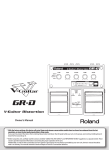
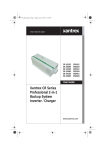

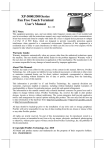
![RessqM, Enhanced Version of RESSQ [Javandel et al., 1984]](http://vs1.manualzilla.com/store/data/005674408_1-e8a4b9f66c80cdc83d847a710e5b4b1f-150x150.png)
